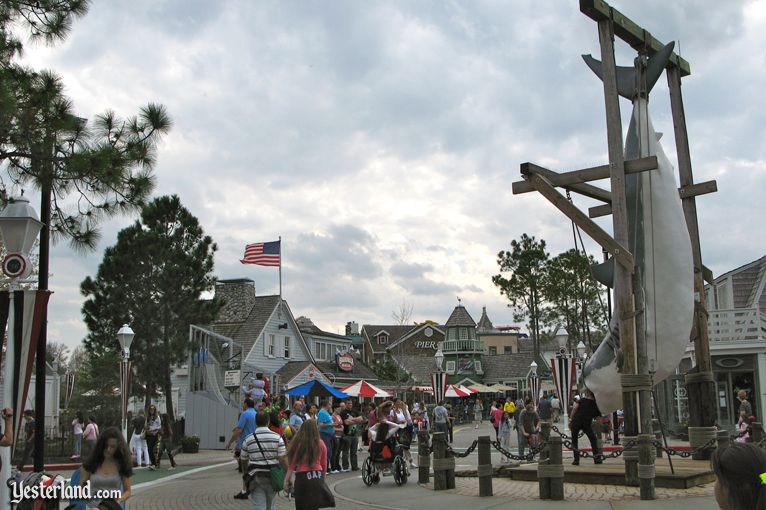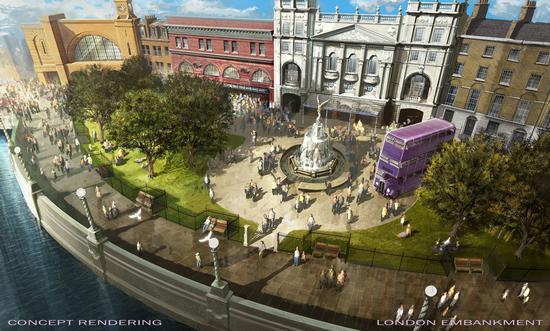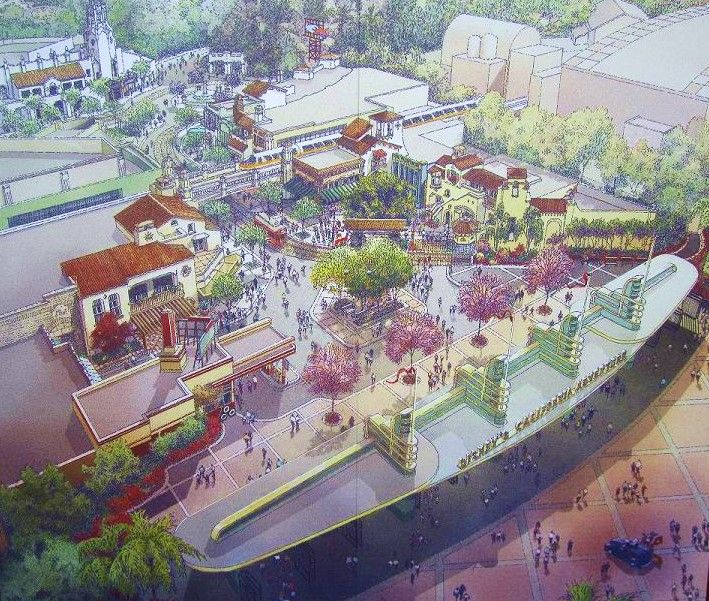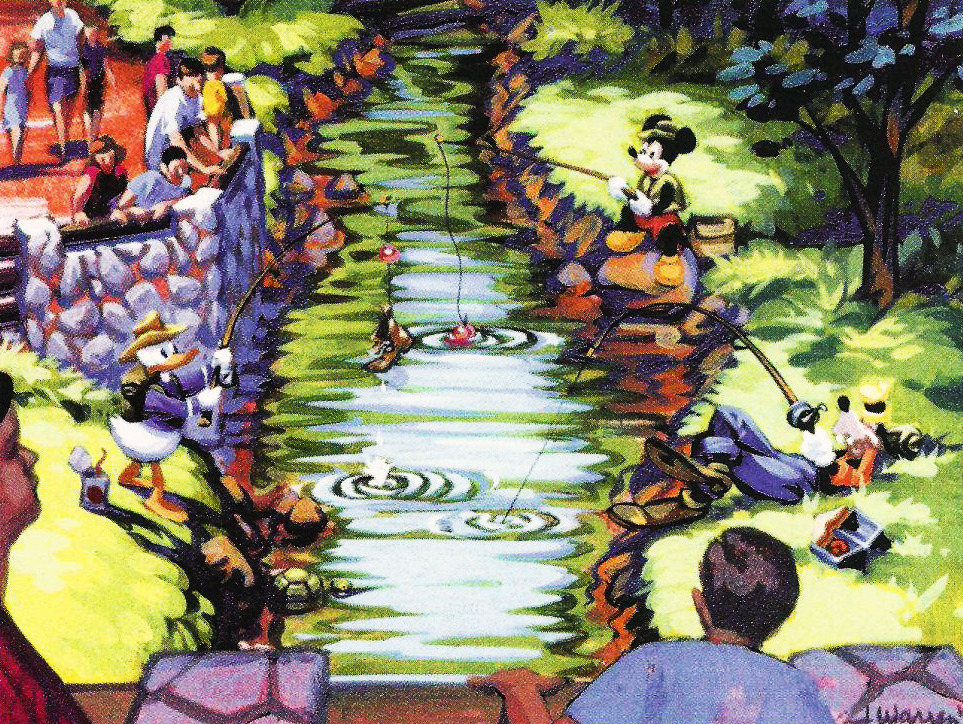5. Amity at Universal Studios Hollywood

Lifetime: 1990 – 2012 (22 years)
Universal Studios Florida opened in 1990. Unlike Magic Kingdom’s fantasy-infused lands, Universal’s were picture-perfect recreations of real places, ready for their close-up. New York, Hollywood, San Francisco, and… Amity! Recreating the placid islands of Cape Cod and Massachusetts in the midst of a charming community street festival (read: games of skill), Amity truly existed for one solitary reason: to house the Lost Legend: Jaws.
In fact, Captain Jake’s Amity Boat Tours – the ride’s departure point – featured real props from the films, and the ride’s queue video was cleverly disguised as Amity’s local news station. Unlike the park’s other themed lands, this quaint village drawn right from Jaws didn’t really have a reason to exist without its headlining ride. That’s fine, since it was bulldozed anyway.

What happened: Jaws closed in 2012 – the last of Universal Studios’ epic creature features to meet the wrecking ball. Amity became the London waterfront – home to Kings Cross Station. Of course, stepping through the shops of London leads to the Wizarding World of Harry Potter – Diagon Alley. Is Gringotts a worthy replacement for Jaws? We’ll leave that to you to decide. But at least rest easy knowing a number of sharky Easter eggs are hidden in the magical land.
6. Sunshine Plaza at Disney California Adventure

Lifetime: 2001 – 2010 (9 years)
Another of California Adventure’s opening day lands to get leveled, Sunshine Plaza was meant to act as the park’s “Main Street” equivalent. Located beyond the world’s largest mosaic tiles, Sunshine Plaza made up the core of the “postcard” entry designers had planned for the park’s entrance, reigned over by a stretched-and-skewed cartoon Golden Gate Bridge and terminating in the park’s demoted icon, the Sun Icon.
Ultimately, Sunshine Plaza represented just about everything wrong with California Adventure. With corrugated steel walls, a bleak concrete plaza, and a metallic “hubcap” icon more fit for a mall than a Disney Park, the land was a stark contrast to Disneyland rather than being a complement and companion.

What happened: In 2010, Sunshine Plaza disappeared behind construction walls. It was replaced with the spectacular Buena Vista Street, a 1920s Los Angeles complete with jazzy music, elegant department stores, the Red Car Trolley, the iconic Carthay Circle Theater, and references to long-lost Disney characters. Just as Sunshine Plaza had been a reminder of California Adventure’s unhappy opening, Buena Vista Street was the perfect icon of its historic, reverent, idealized Californian rebirth.
And Buena Vista Street wasn’t alone…
7. Condor Flats at Disney California Adventure

Lifetime: 2001 – 2012 as part of the Golden State; 2012 – 2015 as a land (3 years)
Located just off the hub of Sunshine Plaza was Condor Flats – a California Adventure land supposedly recreating the state’s high desert military base airfields. Littered with metal lattice structures, satellite dishes, old rocket parts, and “desert” rocks, the runway-lined land really existed solely to host the Lost Legend: Soarin’ Over California.
The problem with Condor Flats was similar to the rest of the park: it was too modern and too edgy, lacking the “magic” of visiting an idealized and historic place. To make matters worse, the tiny land wedged against the evergreen-forested Grizzly Peak certainly didn’t feel like an expansive desert. The land received some light placemaking during the park’s five year reconstruction, and emerged during the park’s 2012 re-opening as its own standalone land… until…

What happened: In 2015, Imagineers proved that California Adventure’s reimagining wasn’t over. Though Condor Flats had only been promoted to full “land” status three years earlier, a beautiful transformation overtook the “desert:” it was absorbed into the nearby Grizzly Peak and its 1950s National Park setting. Desert rocks became High Sierras rocks; cactuses became evergreens; rusted metal scaffolds became fire watchtowers; scrap metal was replaced with a family sedan, parked and ready for a hike. The Grizzly Peak Airfield is inarguably an improvement over the land it replaced.
8. Camp Minnie-Mickey at Animal Kingdom

Lifetime: 1998 – 2014 (16 years)
Quite unlike the spectacularly detailed, lovingly-crafted, and well-researched lands elsewhere in Disney’s Animal Kingdom, Camp Minnie-Mickey was decidedly less permanent. Made of two hastily-assembled shows and a number of character greeting huts, the land felt temporary, because that’s what it was supposed to be!
As the story goes, Camp Minnie-Mickey’s land was initially set aside for an epic land dedicated to “imagined” creatures – dragons, unicorns, sea monsters, and dancing hippos. However, the proposed land was famously cut before the park’s final budget was approved, leaving it a victim of the cost-cutting in the wake of Disneyland Paris’ opening. In fact, we told the entire tale (including how the concept might have migrated up the road to Universal) in the Possibilityland: Beastly Kingdom feature.

What happened: Despite its “temporary” intention, Camp Minnie-Mickey survived an astounding sixteen years (longer than the Lost Legend: Horizons, if you’re counting). Its sleeper hit – the Festival of the Lion King – was relocated to a custom-built theater in the park’s Africa, which is technically a better fit anyway. When Camp Minnie-Mickey finally closed in 2014, it was to make way for Pandora: The World of Avatar – a land that is definitely not temporary.
As for those concepts that went to Universal… Read on…


